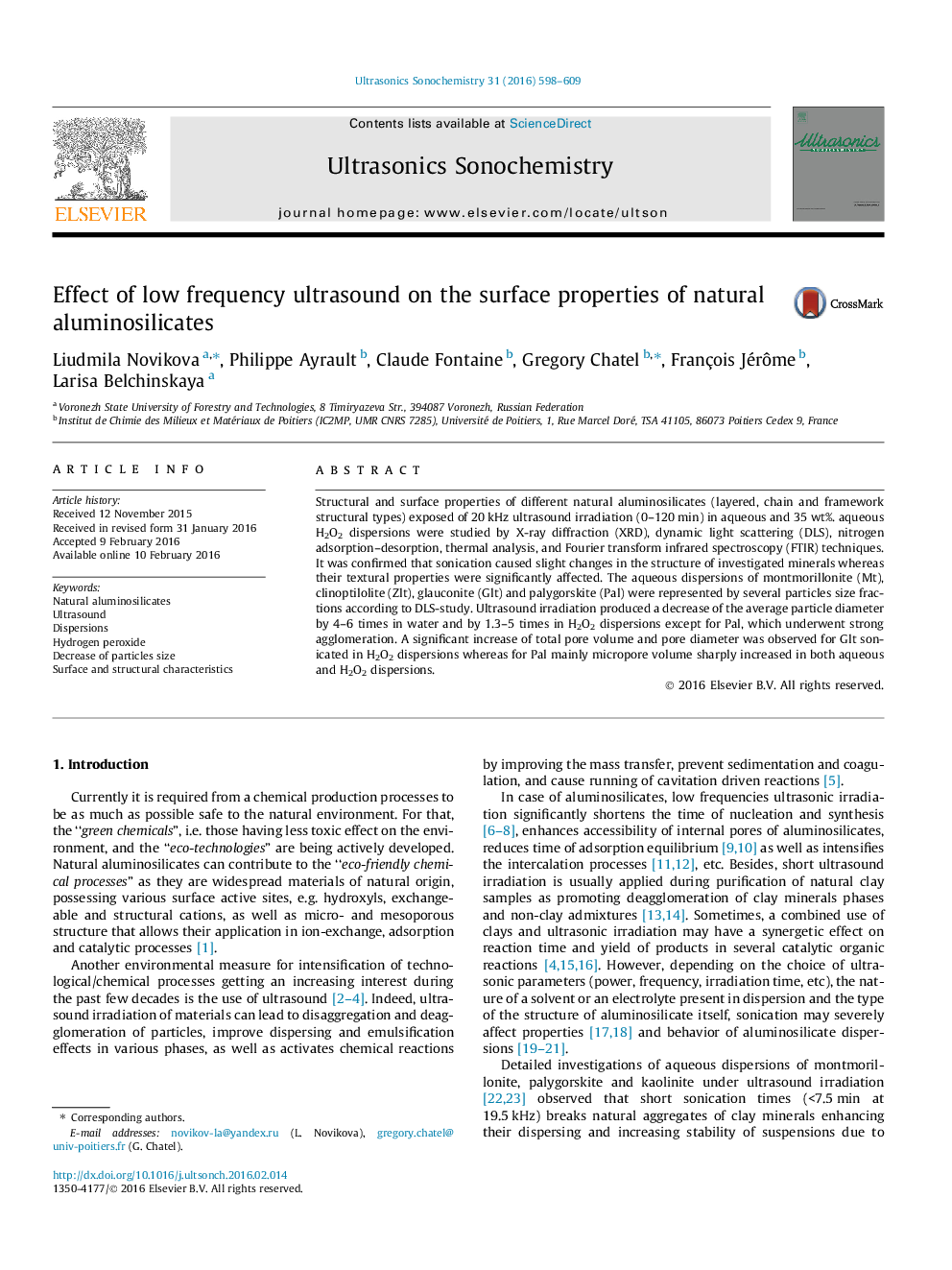| Article ID | Journal | Published Year | Pages | File Type |
|---|---|---|---|---|
| 1265707 | Ultrasonics Sonochemistry | 2016 | 12 Pages |
•Sonication of H2O and H2O2 dispersions strongly change textural properties of aluminosilicates.•Sonication effect weakens in the order zeolites > glauconite > montmorillonite.•Glauconite enhanced total pore volume and pore diameter in 3 times.•Palygorskite increased micropores volume in 7.7 times.•Ultrasound exposure affected crystallite size and caused palygorskite amorphization.
Structural and surface properties of different natural aluminosilicates (layered, chain and framework structural types) exposed of 20 kHz ultrasound irradiation (0–120 min) in aqueous and 35 wt%. aqueous H2O2 dispersions were studied by X-ray diffraction (XRD), dynamic light scattering (DLS), nitrogen adsorption–desorption, thermal analysis, and Fourier transform infrared spectroscopy (FTIR) techniques. It was confirmed that sonication caused slight changes in the structure of investigated minerals whereas their textural properties were significantly affected. The aqueous dispersions of montmorillonite (Mt), clinoptilolite (Zlt), glauconite (Glt) and palygorskite (Pal) were represented by several particles size fractions according to DLS-study. Ultrasound irradiation produced a decrease of the average particle diameter by 4–6 times in water and by 1.3–5 times in H2O2 dispersions except for Pal, which underwent strong agglomeration. A significant increase of total pore volume and pore diameter was observed for Glt sonicated in H2O2 dispersions whereas for Pal mainly micropore volume sharply increased in both aqueous and H2O2 dispersions.
